Beryl: what is it and who is it for, properties and varieties
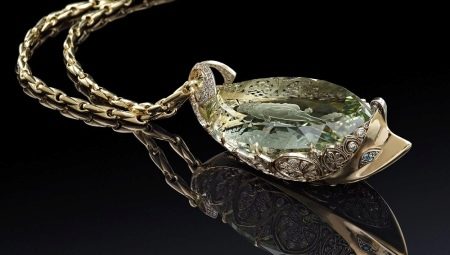
Among the stones used for decorative purposes, beryl is widely used. But the idea of it among non-specialists is very vague. It's time to fill this gap for everyone who wants to start working with this semi-precious stone.
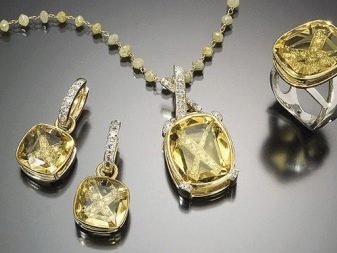
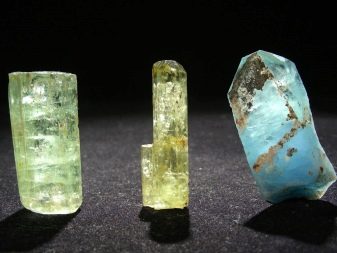
What it is?
It is worth starting a description of beryl with an indication that this stone has been used for a very long time. There was still no Ancient Sumer, Egypt, or Babylon, and beryl, including transparent, was already actively used. Archaeological finds indicate that well-made beryl jewelry existed approximately 6,000 years ago. The assumption is quite justified that at least 2000 years before that there were experiments and trial attempts to work on stone. The mineral is found in many places, including in our country, and in the New World. It is assumed that the earliest of all it began to be mined in significant volumes in Africa.
The origin of beryl is well established by modern geology and geophysics. It is a volcanic mineral that arises from the crystallization of magma in the early stages of the development of the globe. In this case, a melt was formed, which was characterized by increased fluidity. It contained various inert gases, as well as alkali metals. The melt saturated the free areas of the rocks.

It should be borne in mind that only the initial stages of beryl formation took place in the deep bowels of the earth. Each subsequent step took place closer and closer to the surface.
Depending on the characteristics of the process, stones of very different sizes could be formed. Beryls are known that reached enormous sizes.The largest samples taken to the surface had a diameter of 6-18 m. Such specimens are mined mainly in India, and beryl of Ukrainian origin is of the best quality. The famous Swedish scientist of the 18th-19th centuries, Jens Jakob Berzelius, suggested calling one of the versions of the mineral, mined in his country, pseudo-emerald.
Beryl has been studied quite actively. Now there is a lot of information about its crystal lattice and chemical composition. It was possible to find out that special channels in the structure of the stone contain alkali metals and inert gases. Crystals have a prismatic configuration, in diameter they are closer to hexagons.

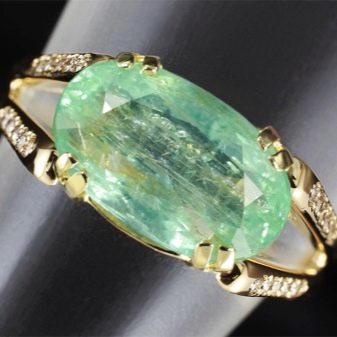
But there are also crystals with rare configurations:
- in the form of a pyramid;
- like a cone;
- resembling a spindle.
The shape of the stone is influenced not only by the chemical composition, but also by the conditions in which it was formed. So, in pegmatite veins, either cones or shortened prisms are formed. Hydrothermal deposits predominantly contain crystals in the form of long prisms and acicular minerals. In metasomatic geological structures, predominantly "skeletal" and case-like crystals are formed.
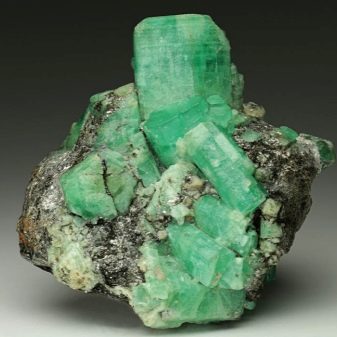
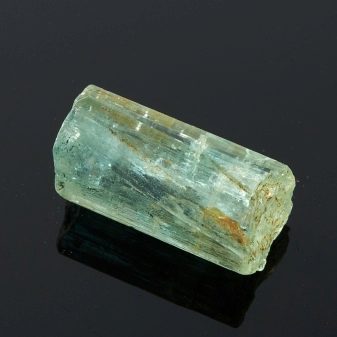
Beryl can be very large. Back in the early twentieth century, a greenish-blue stone weighing 110.2 kg was found in Brazil. A fragment of a mineral approximately 2 m long was found in the USA. Large specimens were also found in other places. As for the color of beryl, it is influenced by the presence of various substances. If the concentration of lithium increases, the stone turns out to be lighter and slightly pinkish.
With an increase in the proportion of cesium, a pale pink, pink or clove color appears. Yellow, blue and green colors are formed due to different concentrations of iron ions displacing aluminum. The green color is due to the presence of chromium, vanadium and iron.
Beryls of all varieties are not susceptible to the action of acids (except for hydrofluoric acid). Any beryl has a glassy luster.
The strength of the stone is independent of color (which is an important way to determine the authenticity of minerals).
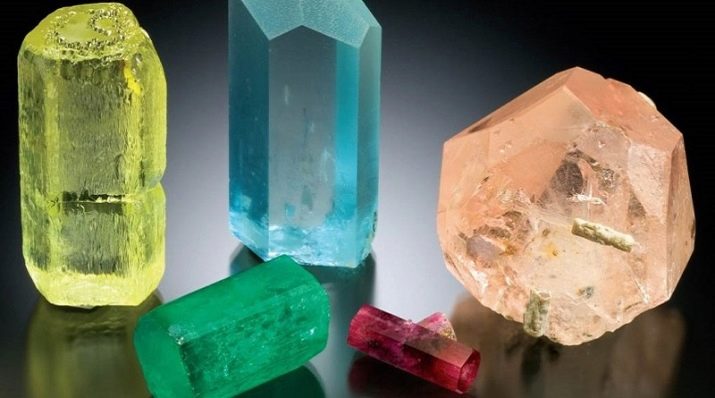
Varieties
The number of types of beryl present on the jewelry market today is quite large. The noblest type of beryl is, of course, the emerald. Most often, it is known to have a green color. This group of minerals includes:
- pink morganite;
- pezzottaite (colored in a raspberry tone);
- bixbit (it is characterized by a red color);
- yellow heliodor;
- aquamarine (has a blue-green color);
- goshenite (looks like a completely colorless pebble).

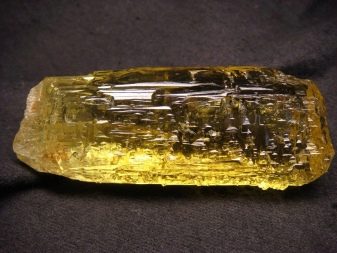
But the assortment of beryls is not limited to these varieties. There is also bazzite (this name was given to bluish, relatively pale crystals). This mineral contains scandium. Bazzite is not used in the jewelry industry. Blue is typical for augustite and mashisha. Both of them fade over time, this is especially typical for mashisha.
The difference between the main varieties of beryl can be associated not only with tonality, but also with the level of permeability to light, total cost, and demand in the decorative industry. Beryl can also be characterized by golden, white and even black colors. Usually, stones of the same color are mined in one deposit. The highest value is naturally the emerald.
Transparent morganite is also highly valued. Despite its inferior hardness to emerald, it is approximately at the same level in external beauty.
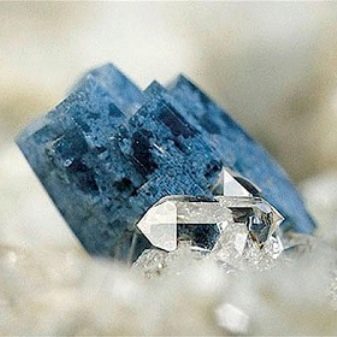
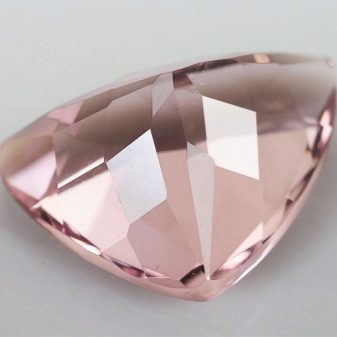
Morganites contain cesium and are therefore a source of radiation. The mass of such gems in most cases does not exceed 25 carats. Only a few samples that become the property of mineralogical museums can be larger than 1000 carats.
Bixbit is much less common. For its appearance, the stone received an alternative name "red emerald". Despite being hard, bixbits are relatively fragile.According to a number of experts, such minerals are the rarest raw materials for jewelry on our planet.
Raspberry beryl, aka pezzatoite, was discovered only at the end of 2002. The only deposit made it possible to obtain only 10 kg of stone, therefore, a gigantic number of samples sold now are made artificially.
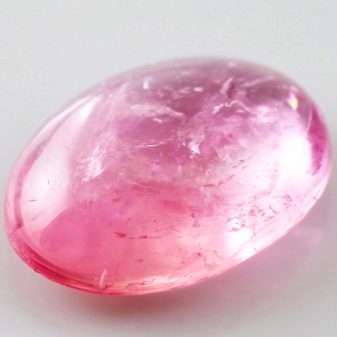
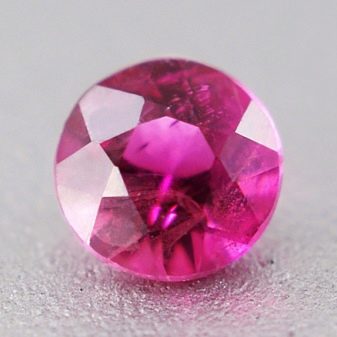
Returning to heliodors, it is worth pointing out that the color of these stones can vary greatly. Some specimens are yellow with a golden sheen, others are almost brown; in the presence of iron, green notes appear. The mineral containing uranium turns blue when heated. But the most valuable heliodors are still those that have a natural yellow color.
Aquamarine (recall that this is also a subtype of beryl) looks like frozen, icy water droplets. Despite its seeming inconspicuousness, this mineral has turned out to be widely demanded by collectors and connoisseurs. That is worth at least its use to inlay the crown of British kings. Aquamarines can be of the following colors:
- greenish;
- sky-sea;
- bluish;
- powerful blue.
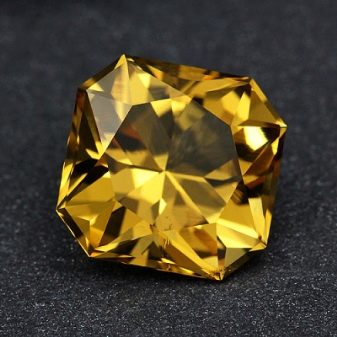

The color of aquamarine is influenced by the presence of quartz. Sometimes its concentration reaches 70%. Note: This mineral can become discolored when exposed to bright sunlight. Another notable feature of the stone is dichroism.
Goshenite is valued least of all, however, jewelry with such a stone is stricter and more elegant than in a number of other cases, so there is a certain demand.
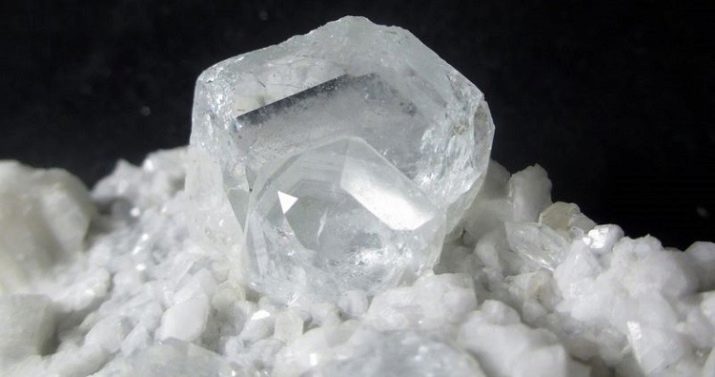
Place of Birth
Accumulations of beryls are formed in magmatites and metasomatites. The rarest type of deposits is the accumulation of stone in the rhyolite layer. It mainly contains beryl-bixbit or red beryl. The magmatic type of deposits is scattered inclusions and schlieren precipitates in the medium of granite or miarolic pegmatite. The ability of beryl to accumulate well in placers was noted.
The gem-quality stone in our country is concentrated mainly in the middle Urals, north of Yekaterinburg. There it occupies the deposits of the Aduisko-Murzinskaya pegmatite strip. Until recently, these deposits were a major source:
- heliodor;
- aquamarine;
- vorobyovite;
- green beryl;
- rosterite.
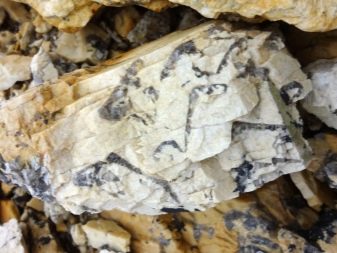

The South Urals have in the past served as a source of blue-green aquamarines. These stones, reaching 0.2 m in length, were raised from the pegmatites of the Ilmen mountains. To the south, wine-yellow beryl was a by-product of the development of the Kochkar gold deposits. Deposits of stone are also found in the Krasnoyarsk Territory, or rather, in the Kara Sea. There, on the Nordenskjold archipelago, at least 300 pegmatite veins were discovered, including beryl crystals up to 0.1 m in size.
Altai deposits are Kaluginskoe and Mountain Development, where the stone is extracted from the Tigiretsky pegmatites. North of Nizhneudinsk, in the Elash deposit, it was possible to find crystals up to 0.4 m in length. Tuvan pegmatites Kara-Adyr are another source of large stones. Even in our country, such sources of beryl are known as:
- Suprunovskoe, Abchadskoe, Verkhnekutimskoe, Vodorazdelnoe (Menzenskoe) fields;
- mines of Adun-Chelon;
- Dosatui;
- Novo-Duldurguyskoye and Sakhanayskoye fields;
- Sherlovaya Mountain;
- Borshchovochny ridge.
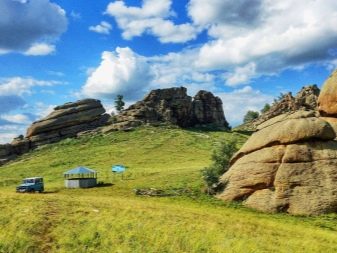
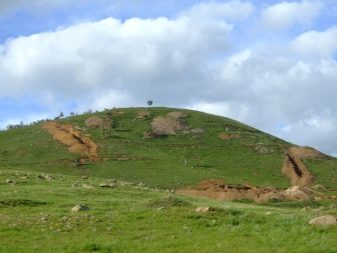
In Karelia, beryls are found in Kaido-Yarvi, in the Plotnolambinsky, Slyudyanoborsky manifestations. Outside of our country, the mineral is found:
- in Ukraine;
- in the central and eastern parts of Kazakhstan, in Kyrgyzstan;
- in Finland (deposits have been developed since 2005), in Norway, in Northern Ireland, in France and Italy;
- in Spain, Bulgaria, Kenya, Egypt, Zambia, Ghana, Nigeria, Mozambique;
- in India, Australia, China, Nepal, Vietnam, Mongolia, Brazil, USA, Colombia, Argentina and Mexico.


Properties
Physical and chemical
The conversation about the mineral beryl cannot be reduced only to a description of its deposits. In the basic formula of the stone, the presence of aluminum, beryllium, silicon and oxygen is noted.But there are certainly other impurities (alkali metals, lithium, manganese, inert gases, water). In the crystal lattice, a hexagonal system appears. Octahedral rings, which are part of the crystal structure of the mineral, are located one above the other, such a structure forms hollow channels.
The boundaries between the rings are formed by beryllium and aluminum inclusions. We can say that the crystal lattice has not only lateral, but also vertical bonds. Physical parameters are largely determined by the specific type of mineral. So, The Mohs hardness of the heliodor ranges from 7.5 to 8 units. The density of the mineral is 0.00026-0.00028 kg per 1 cubic meter. cm. Heliodor is quite fragile. It is characterized by a luster like glass. When fractured, the stone looks uneven. Dissolution in acids is impossible. Aquamarine crystals are shaped like a column or a prism. The color of the mineral can vary greatly.
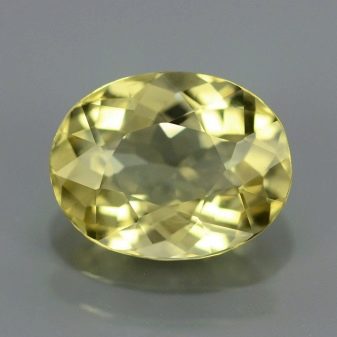

Magical
It is impossible to reduce the meaning for a person of such a stone as beryl, only to its aesthetic properties. It doesn't even matter whether the statements about the mystical parameters of the stone are true or false. Much more significant is the fact that many are sincerely convinced of them. Back in the Middle Ages, it was argued that polished beryl balls helped to expose thieves. The mineral was widely used in mystical practices, in the manufacture of religious utensils, etc.
Modern adherents of mysticism focus on the fact that this mineral can act as a talisman. According to them, the rarity and market value of the stone have nothing to do with its protective parameters. The authors of myths like to assert that all varieties of beryl are capable of:
- increase luck;
- provide increased attention to the opposite sex;
- reduce the risk of mental health problems.


The mineral is recommended by mystics in other cases as well. In their opinion, it will come in handy for those who love travel or for those who fear theft of property, are preparing for litigation, or simply cannot deal with confused thoughts. Fans of mysticism also claim that mainly transparent minerals can act as amulets. But dark samples, according to their opinion, are suitable only for jewelry purposes. Some say that beryl helps to penetrate into the future, to predict it.
Specialists in such a field of alternative medicine as lithotherapy believe that beryl combines the magic of the earthly elements and the feminine principles. They claim that the stone helps to calm down and suppress emotional storms. Continuing the conversation about the supposed magical parameters of the stone, it is necessary to point out the mention of its abilities:
- increase responsibility;
- to strengthen diligence, patience, practicality;
- make a person more pragmatic;
- build confidence and stamina.


Pink Bixbits are credited with the ability to establish communication with the opposite sex, help in developing tact and polite treatment. Sometimes they refer to increasing sociability, increasing the number of friends and building stronger bonds between people. It is argued that beryl thereby facilitates the arrangement of personal life and professional, career growth. At the same time, shyness and timidity are suppressed. They say about heliodors that they make people more optimistic and help them appreciate life, at the same time overcoming any obstacles. Therefore, they are recommended to be worn by those who faced serious problems or even real deep grief... In such cases, the mineral will help maintain self-confidence and a positive attitude.
Augustites are considered stones to help maintain vital stability and resilience. This sounds very relevant in recent years, when everything has become very shaky and uncertain. Therefore, Augustite should be preferred to those people who feel in a good position and do not consider it necessary to change anything.The stone is considered to be an assistant in strengthening families, it contributes to the development of respect and mutual responsibility in it. There are also mentions that augustite is useful for people seeking spiritual searches and discovering their inner essence.
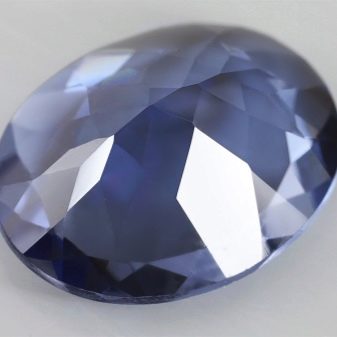

Goshenite is sometimes used by aspiring entrepreneurs and other serious professionals as an assistant in solving difficult problems. They believe that the mineral will eliminate unjustified financial losses and select reliable people in their environment.
A conversation about the alleged magical properties will certainly not be complete without mentioning the use of blue beryl. They are recommended to be worn by newlyweds in order to exclude family crises. Or at least smooth out their sharpness.
If blue beryl is worn by older people, then their love should become more tender.


Therapeutic
When talking about the use of beryl, its supposed therapeutic properties cannot be ignored. Various sources claim that the stone is able to strengthen the immune system and save a person from chronic lesions of the digestive system. Even in ancient Babylon, this mineral was considered to heal from liver damage.
Seekers of "natural remedies" prefer to think that the therapeutic properties of beryl are determined by its jewelry use. So, earrings with any type of stone can relieve a toothache or headache. And to maintain lung health, the use of beryl in pendants will help.
This alleged property is advised to take into account not only those suffering from inflammatory, infectious diseases, but also allergy sufferers and people who simply smoke.
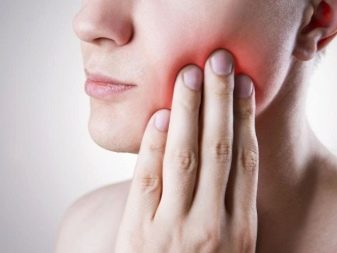

Of the common therapeutic manifestations, the ability of beryl to cope with excess body weight is often mentioned. It is also worth noting the links to the effect in the treatment of viral lesions and pain in the muscles of the back. As for pendants made of stone, as well as bracelets, these jewelry are considered to be a good way to suppress chronic kidney ailments.
Regardless of the type of jewelry, beryl is considered an effective remedy for:
- heartburn and other manifestations of high acidity;
- bronchial asthma;
- ulcers of the digestive organs;
- high blood pressure;
- hemorrhoids;
- overweight;
- visual impairment;
- weakening of intellectual abilities;
- neurotic conditions.


Who is it suitable for?
Astrologers act quite rationally (from their point of view), giving recommendations on the topic of who is suitable for beryl, and who presumably does not need it. They claim that the stone is recommended to be worn by Cancers, Pisces and Scorpions. Astrologers call the best version of beryl aquamarine. They also talk about its alleged benefits for Taurus (expanding the circle of friends) and for Gemini (increases discipline).
Other recommendations of the mystics are worth noting. They often say that beryl is undesirable to wear on vacation or at entertainment events. In these cases, the stones will push you to rash actions. Astrologers believe that beryl is not suitable for Leo, Aries, Virgo and Capricorn.


However, it should be noted that each astrological direction and even each individual astrologer has its own, special approach. There is the opposite of the opinion just described, according to which beryl is suitable for any sign of the zodiac. So, adherents of a similar astrological school say that the same Aries is a mineral:
- help you get closer to family and friends;
- make it easier to achieve success at work;
- will allow you to extinguish adolescent maximalism, its negative features.


How to distinguish from artificial?
The rarity of some types of beryl crystals and the abundance of its varieties make the issue of weeding out fakes very urgent. Counterfeiters use every opportunity to depict natural rough or polished stone in any way they want.Despite the difference in the parameters of each type, there are certain general properties that must be taken into account in order not to buy a fake. They are as follows:
- transparency and specific shine (characteristic only for natural stone);
- the ability to change color;
- present inclusions of different elements;
- the effect of a cat's eye (manifested in faceted colorless specimens);
- ability to withstand contact with concentrated acids.
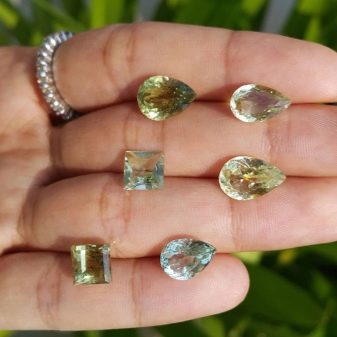
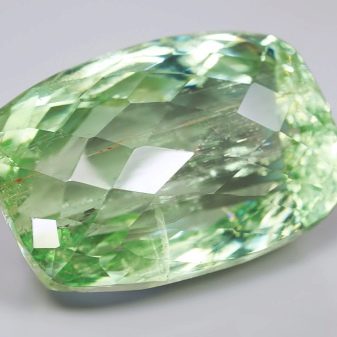
Subtleties of care
Beryl jewelry must be looked after very carefully. Like other decorative minerals, they do not tolerate prolonged contact with direct sunlight, so it is recommended to store jewelry in a sufficiently dark place. The stones are cleaned no more than once a month. To do this, use soft brushes and warm soapy water.
When the gem is put in order, it must be wiped dry with a soft cloth.

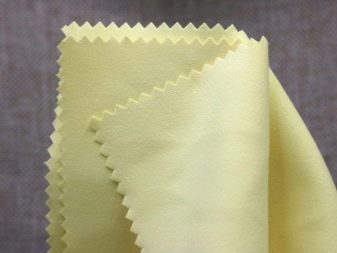
For the properties of beryl, see the next video.








